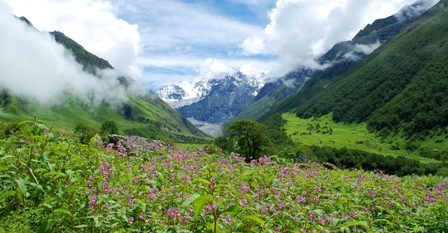Sustaining Ecosystems and Livelihoods
 Every entity has a pivotal role and place in the scheme of nature. Micro-organisms, plants, animals co-exist in different ecosystems such as coral reefs, forests, deserts, wild lands etc. Biodiversity refers to diversity or variety found in nature.
Every entity has a pivotal role and place in the scheme of nature. Micro-organisms, plants, animals co-exist in different ecosystems such as coral reefs, forests, deserts, wild lands etc. Biodiversity refers to diversity or variety found in nature.
Biodiversity boosts ecosystem’s productivity, where each species, no matter how small, all have an important role to play. Biodiversity is essential for sustaining the living networks and systems that provide us all with health, food, wealth, fuel and other vital services that our lives depend on.
In simple words, biodiversity is an internal part of the biosphere and is directly linked to the ecological, biological, social and cultural sustainability and development. It helps in maintaining a balance in the ecosystem by recycling and storage of nutrients, by providing food to humans and animals and by promoting recreation, tourism, cultural value, education and research.
In a country like India, where close to 275 million people depend on natural ecosystems for day-to-day subsistence, biodiversity conservation and sustainable use of natural resource get intrinsically linked to people’s rights to secure their livelihoods. A sustainable livelihood makes people resilient to shocks and stresses such as natural disasters, economic/social upheavals and also enhances their well-being without undermining our ecosystem.
Forest dependent communities are many times seen as a threat to biodiversity by conservation managers. However, it is poverty, lack of sustainable alternative livelihoods and absence of financial/social incentives for resource dependent communities that are some of the threats to biodiversity. India has also ignored the need to integrate biodiversity and livelihood consideration in development planning. There has been an ongoing struggle between conservationists and communities that depend on biodiversity and the gap is only increasing as efforts are being made to protect biodiversity.
The current siloed treatment is pushing India to choose between development and conserving nature. On one hand, acres of forestland are diverted for development projects. On the other hand, nearly 70% of India’s population is dependent locally on these natural ecosystems for subsistence. The consequent rampant ecosystem degradation are negating India’s hard-won development gains, taxing our societies and saddling the government with extremely high costs. Thus, compromising all efforts to achieve sustainable, inclusive and resilient development. There is an urgent need to develop a shared understanding towards biodiversity for sustaining livelihoods. It must not be viewed as a problem in isolation, it has to be integrated in the larger goal of achieving well-being for the people and the planet.
TARAgram Yatra 2014 will examine how to create a sustainable future so that there is well-being for people and the planet. The Yatra will showcase the examples from Nilgiri Biosphere Reserve, where Keystone Foundation has been working to develop sustainable practices of livelihoods. The Yatra aims to create a symbiotic link between biodiversity and the social and economic pillars of sustainable development by involving the practitioners, experts and decision makers.



Leave a Reply